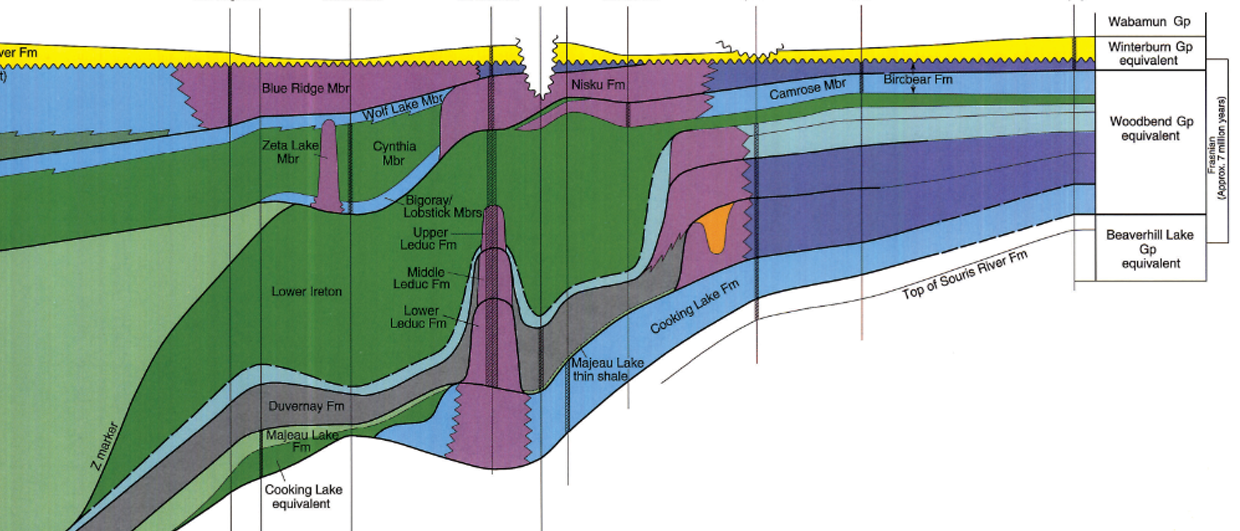Whilst the people at E3 Lithium in Canada will no doubt support the road to Net Zero, they were not very pleased to see the company Enhance receiving a permit to drill a CCS research well in the same acreage for which they hold a brine-hosted mineral licence. E3 Lithium feared that this “could directly and adversely affect the technical and economic feasibility of lithium development.” The well was drilled regardless, and the appeal was dismissed on the grounds that before Enhance can inject any CO2, another application needs to be submitted first.
But it is an interesting case regardless, and it shows the increasing diversity of subsurface use that can sometimes lead to a conflict of interests.
Formations versus Groups
The Formation that E3 lithium is concerned about is the Leduc Formation, which is a well-known Devonian carbonate reservoir in Alberta from which a lot of oil has been produced. And even though E3 Lithium seems convinced that Enhance also targets the Leduc Fm, the decision document that can be found on the website of the Alberta Energy Regulator leaves some room for interpretation. Namely, the document says that with the newly drilled well, Enhance is testing the Woodbend Group formations “and the operations conducted under the Well Licences have not impacted the brine-hosted minerals in the Leduc reservoir.”
Enhance also responds that “E3’s request for regulatory appeal is related to concerns that are subsurface in nature, and there is not yet enough information to evaluate and address these subsurface issues.”
This response and the use of Group versus Formation names leaves room for interpretation. Does Enhance target another formation within the Woodbend Group, or is it saying that the testing it has done under the current licence is not impacting the Leduc because it is not injecting CO2 yet? If the latter is true, the Leduc can still be the main target for CO2 injection. This seems reasonable to assume, given that the Leduc Formation seems to be the interval displaying the most favourable reservoir properties. The use of Woodbend Group rather than Leduc Formation by Enhance still leaves room for speculation though and it should have been better to narrow that down more.
Further comments
In a recent LinkedIn post on the matter by Bill Whitelaw, there is also some commentary on the attractiveness of lithium extraction from the Leduc Formation. Stephanie Robison adds that “our local lithium brines do not rank very well on a global scale. Nobody wants to touch petrobrines for lithium if there is an alternative.”
Brendan Bishop notes that more research is required on the effects of CO2 injection on Lithium concentration. He adds that these kind of conflicts will probably become more frequent in the future. In turn, Bill Whitelaw responded to that concluding that “we’re moving into the “Age of the Pore Space Paradox.”


